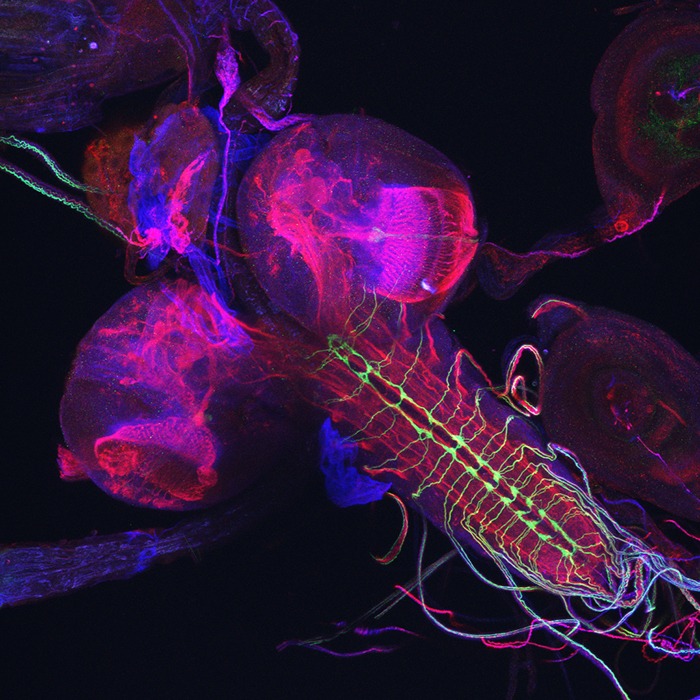Dendrites and axons are the input and output compartments of a neuron, respectively. The distinct morphology of a neuron’s dendrites and axons is fundamental to the assembly of neural circuits. Using Drosophila systems, we identified molecular and cellular mechanisms that regulate dendrite and axon development differently. Our lab also contributed to the understanding of the function, regulation and diversity of the Golgi apparatus in neurons and developed molecular tools for studying the Golgi complex in vivo in multi-cellular organisms.
Learn More:
Building on our strength in cell and developmental biology of neurons as well as Drosophila genetics, we studied the molecular, cell biological and developmental mechanisms that assembles neurons into functional neural circuits. Our lab reported the first neural-activity-dependent topographic map in Drosophila (Yang et al., 2013; Kaneko & Ye, 2015) and used this system to investigate the molecular mechanism underlying the assembly of neural circuits. We also discovered a novel form of sensory-pathway-specific plasticity during the development of Drosophila larvae (Kaneko et al., 2017).
Learn More:
Currently, we are trying to discover the principles that govern the assembly of neural networks beyond those that regulate neuronal development (e.g., dendrite and axon development) and the connections between two groups of neurons (e.g., axon targeting and synapse development). This is a new frontier in developmental neuroscience and requires multidisciplinary approaches, including molecular, cellular, genetic, developmental, physiological, behavioral and computational approaches, which we have established in our lab.
Learn More:



